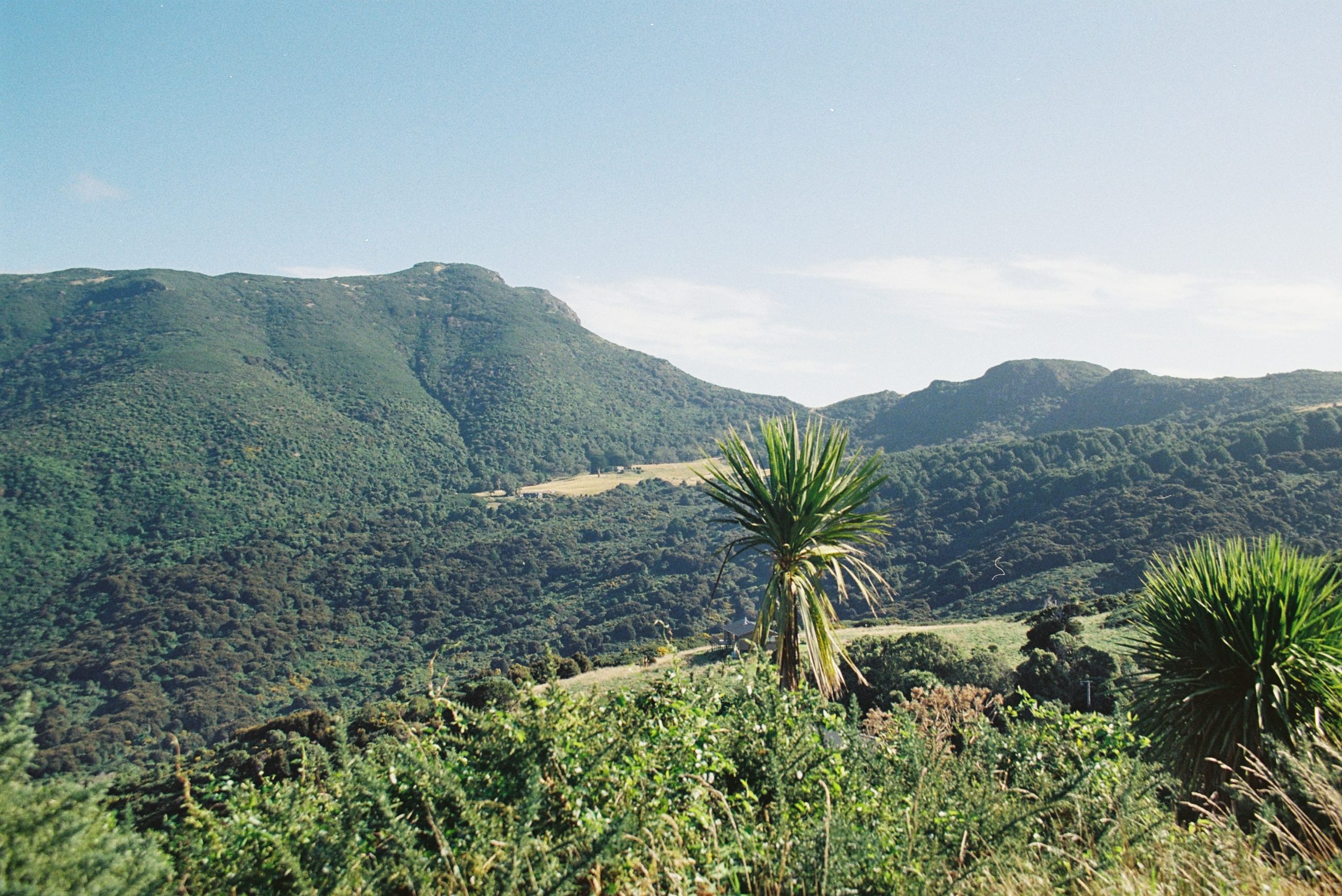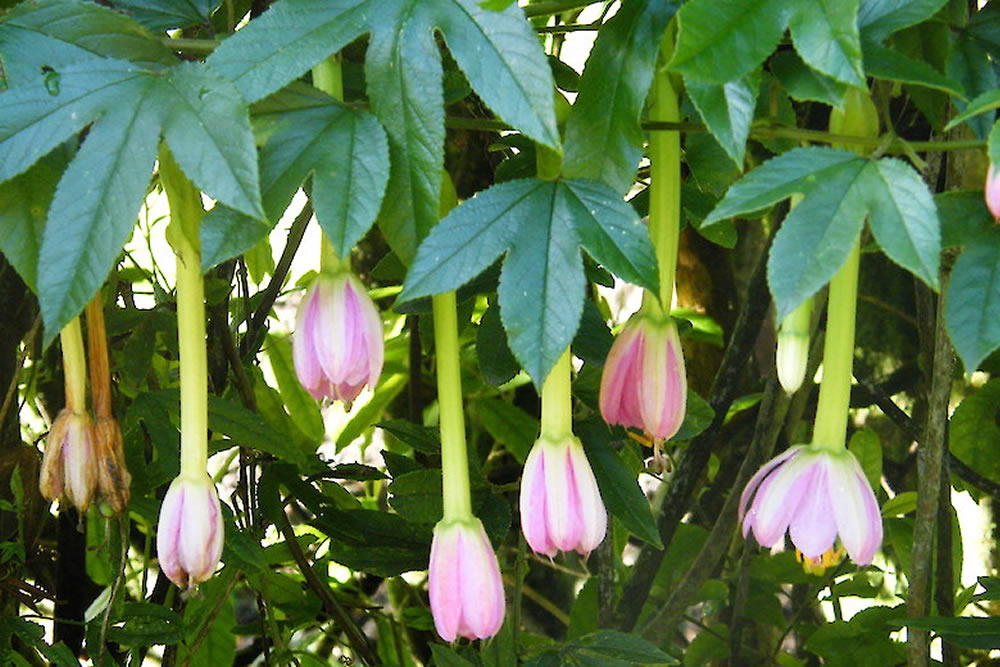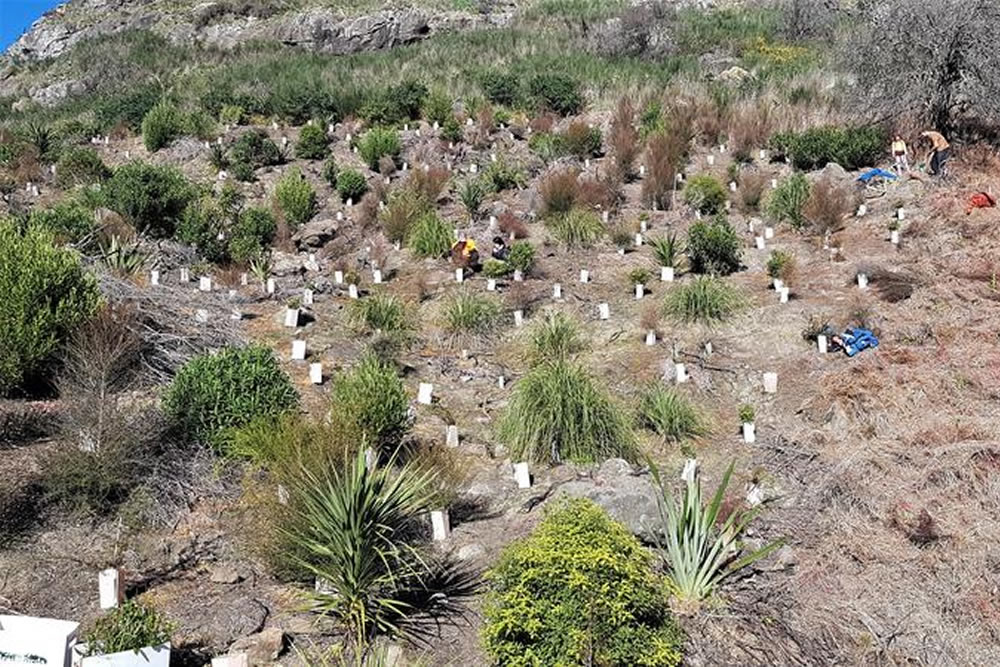
Regenerate our Native Bush
Hugh Wilson of Hinewai has well documented the predominantly podocarp/hardwood forest that blanketed Banks Peninsula. The tallest, grandest forest occupied the valley floors. This was dense podocarp forest with kahikatea as the principal species. Similar species dominated the lower slopes; however lowland totara and matai were more common than kahikatea.
On the upper slopes totara, broadleaf and other shrubby hardwoods and tree ferns occurred. Near the coast, warmth-demanding species such as ngaio, nikau palm, akeake, titoki, native passion vine and shining broadleaf were common. On the highest bluffs the shrubland and scrub of non-forest montane species, including snow tussock, fescue tussock, Dracophyllum and mountain flax, predominated.
Wilson notes that probably as much as three quarters of the area was still under old growth forest when the Europeans arrived to
settle, the other quarter having been fired and cleared by Maori as part of their traditional cultivation practices.

Today …
Interestingly, today vast tracks of the Peninsula are being regenerated. Hinewai is the most obvious example, and more recently the Rod Donald Trust has acquired substantial land holdings. However DoC has also been acquiring land; quite a substantial amount in recent years in Wainui, and there are numerous private projects.
While there are wide-scale plantings, it’s expensive and time consuming. Projects such as Hinewai have (somewhat unconventionally) taken a “reWilding” approach, letting the land generate naturally. There’s no right or wrong way, but the reality is that it’s a very long game, so some choose to give nature a helping hand.
What can you do?
There’s a commercial reality to owning land (as in it’s not cheap) that some choose to balance with ecological values. “Productivity” is typically measured in economic returns, but environmental, ecological, or societal returns may also be important drivers for some landowners.
As a landowner you need to choose your path, and that ranges from doing nothing to:
reducing Weeds

Invasive weeds smother native forest, bush or the ground and prevent native seedlings from regenerating. Removing weeds gives our native vegetation a chance to return to its natural state and provide a home for bird and insects.
removing Pests

The impact of introduced predators has had a devastating impact on many native species, with a massive decline in numbers or, sadly, extinction. Removing pests is the #1 way to help revive our native birds, insects and invertebrates.
replanting Natives

Banks Peninsula was covered in a rich and diverse forest that supported an abundant bird and animal population. Regeneration of their “home” is an important step in helping these populations return.
Let’s work together to help reWild Wainui!
Join our community initiative to reduce Weeds, remove Pests and replant Natives.